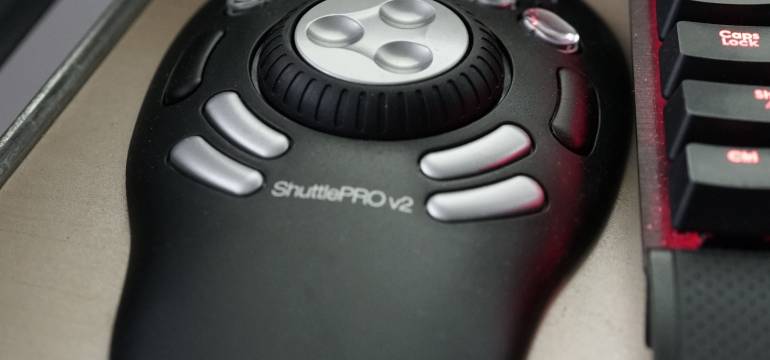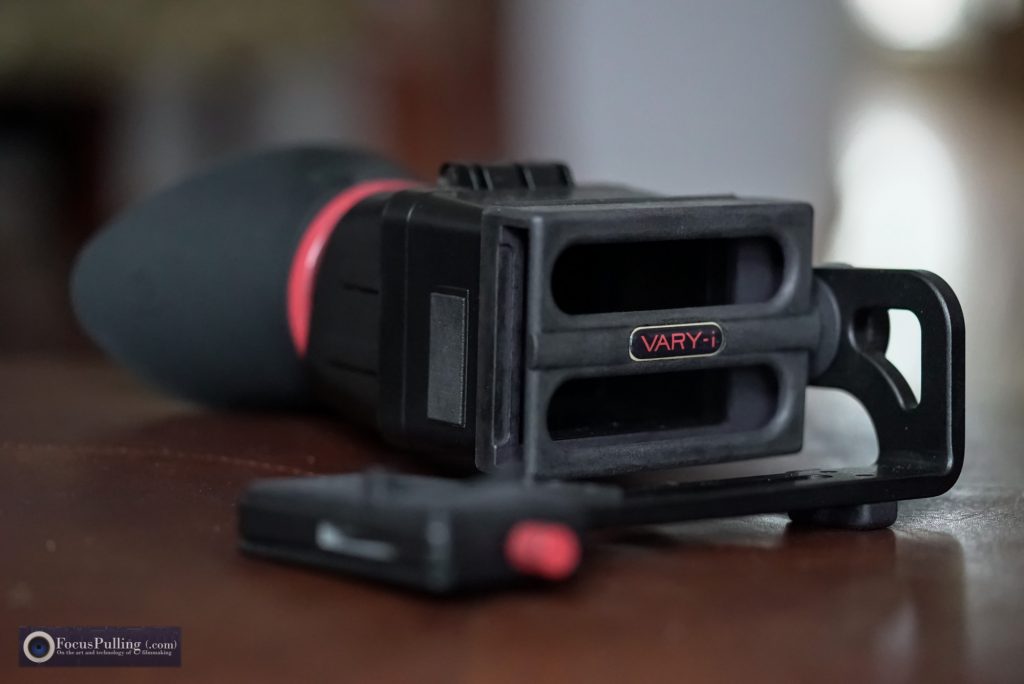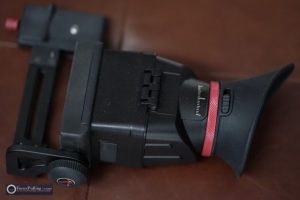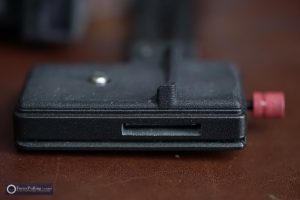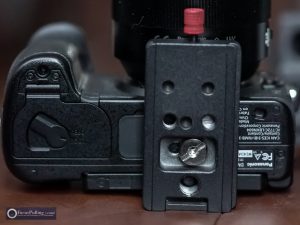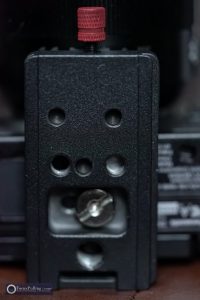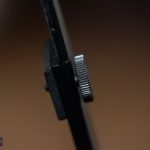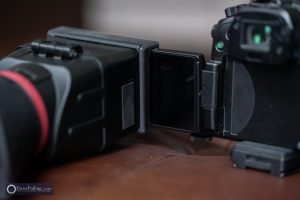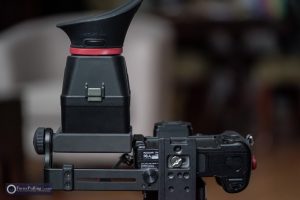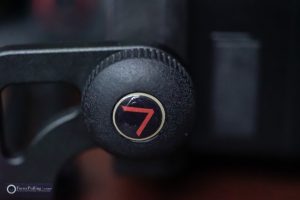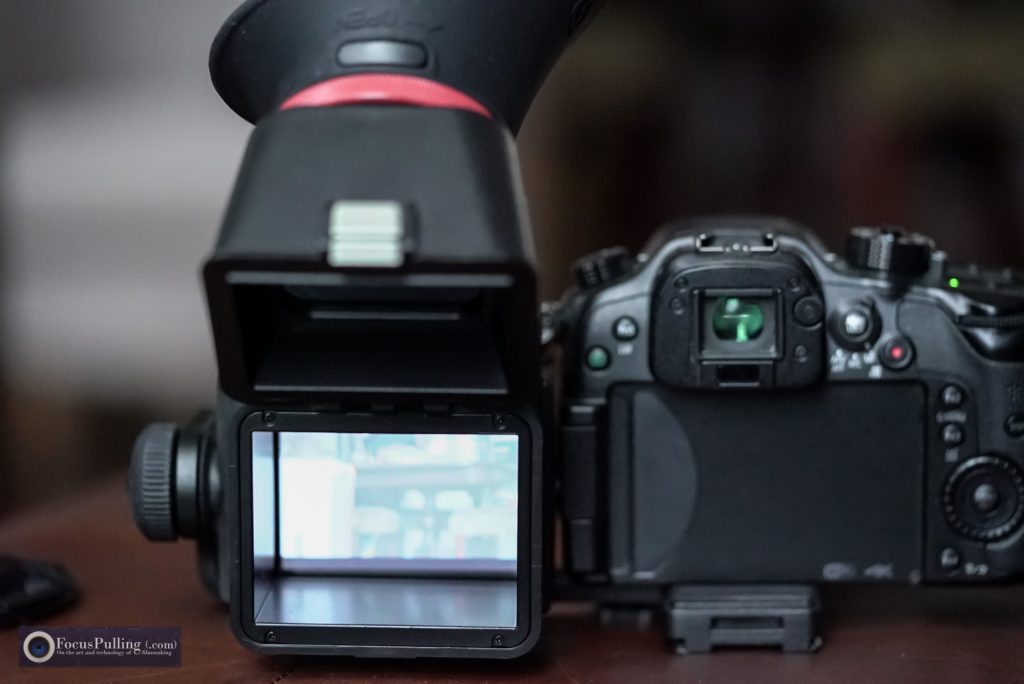The creators of this product, Contour Design, are offering readers here an exclusive 20% discount off any purchase from their webstore using coupon code FP20 at: www.contourdesign.com/store
It’s a common insight that editing a film is where most of the magic happens; that it’s underestimated. Same thing goes for the gear you need in the editing suite. I teach four sessions per year on how to edit with Adobe Premiere, and the first/best advice I’ve come up with is that productivity is all about screen real estate: it’s crazy to work from a laptop screen, let alone just one monitor, when it’s so utterly cheap nowadays to grow your editing workspace by adding at least one extra monitor, for the cost of a few beers. You can dedicate your primary screen to your timeline, effects and playback monitors, with your second screen dedicated to organizing your assets like a storyboard.
 But there’s another and even more under-appreciated tool for video editing: dedicated controls, beyond the computer keyboard. Old-skool vets of tape editing know especially well what it means to sit in a “suite” with big jog shuttles and colorful keyboards. That latter thing of rainbows is growing extinct: to take Adobe Premiere as an example, you’re better off just moving your mouse around than remembering which colorful keys to tap on for the most part. But jog shuttles never went out of fashion, and they never will. Why do most digital non-linear video editors (home studios in particular) still lack them?
But there’s another and even more under-appreciated tool for video editing: dedicated controls, beyond the computer keyboard. Old-skool vets of tape editing know especially well what it means to sit in a “suite” with big jog shuttles and colorful keyboards. That latter thing of rainbows is growing extinct: to take Adobe Premiere as an example, you’re better off just moving your mouse around than remembering which colorful keys to tap on for the most part. But jog shuttles never went out of fashion, and they never will. Why do most digital non-linear video editors (home studios in particular) still lack them?
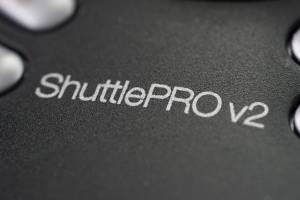 If you edit, you need one, plain and simple. Who’s making them? One of the big surprises is, almost no one. But a company called Contour Design has always been there, and for me, I was using their ShuttleXpress for years. 90% of its value came from its shuttle dial, and even there, especially its center hub that clicks as it rotates, with indents up top for your finger. While you could always press the forward/backward arrows on your keyboard to move frame-by-frame, that would occupy your right hand when it could be put to better use multitasking on the mouse. And so on.
If you edit, you need one, plain and simple. Who’s making them? One of the big surprises is, almost no one. But a company called Contour Design has always been there, and for me, I was using their ShuttleXpress for years. 90% of its value came from its shuttle dial, and even there, especially its center hub that clicks as it rotates, with indents up top for your finger. While you could always press the forward/backward arrows on your keyboard to move frame-by-frame, that would occupy your right hand when it could be put to better use multitasking on the mouse. And so on.
True, you could also turn the perimeter of the dial for “scrubbing” at intuitively variable speeds through your footage (a hold-over from spools of magnetic tape), but that’s still a matter of getting cue points in the ballpark. Really, the value of a shuttle dial for video editing is that rapid ability to tick-tock forward and backward, when things are really getting precise.
For that purpose the ShuttleXpress is great for most everyone: and at under $60, it’s a no-brainer to buy, especially when you’re starting out. But I figured, after years of using it, that now’s a good time to take a look at the upgraded version called ShuttlePRO v2.
The first, most apparent difference is its heft: heavier, and thus gripping the desktop better, it gives confidence in every click, where the ShuttleXpress might have rattled or slipped a bit. But as you can see from the pictures, it’s gotta lot more buttons. Lotsa.
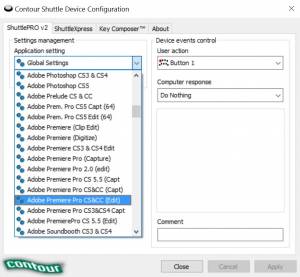 The above illustration gives you some idea of the numerous Adobe Premiere functions that can be assigned to the ShuttlePRO’s dedicated buttons. They can be re-assigned using a background task that has its own configuration interface, seen at right, which auto-selects from a variety of application profiles depending on what you are using at the time. I suppose one minor qualm I’ve got is that it seems like the list needs a bit of tidying up: in the example at right, you’ll see “Adobe Premiere CS&CC (Edit)” versus “Adobe Premiere (Clip Edit),” just to mention two examples, and who could know the difference? It’s possible to delete some of those outdated entries manually, digging deep into the system disk, but it’s not possible from within that interface. Apart from those presets (and Contour Design’s crowd-sourced presets at its forums), you can customize to your own preferences just as freely as you can map shortcuts inside of, e.g., Adobe Premiere.
The above illustration gives you some idea of the numerous Adobe Premiere functions that can be assigned to the ShuttlePRO’s dedicated buttons. They can be re-assigned using a background task that has its own configuration interface, seen at right, which auto-selects from a variety of application profiles depending on what you are using at the time. I suppose one minor qualm I’ve got is that it seems like the list needs a bit of tidying up: in the example at right, you’ll see “Adobe Premiere CS&CC (Edit)” versus “Adobe Premiere (Clip Edit),” just to mention two examples, and who could know the difference? It’s possible to delete some of those outdated entries manually, digging deep into the system disk, but it’s not possible from within that interface. Apart from those presets (and Contour Design’s crowd-sourced presets at its forums), you can customize to your own preferences just as freely as you can map shortcuts inside of, e.g., Adobe Premiere.
 That opens up an interesting (but risky) world of possibilities when it comes to using the ShuttlePRO for more than just core video editing applications. I’m working on a way to use it with a free program called Subtitle Edit, created in Denmark and arguably the very best subtitling/captioning application available anywhere (currently only for Windows computers). This is the program that I mentioned a few posts ago when proposing that you can combine automatic captioning, with Subtitle Edit, to create subtitles at no cost in a fraction of the time it would take to make from scratch. Making edits to captions/subtitles so that they can nail the beginnings and ends of words is a constant shuffling around time code, thus having the ShuttlePRO as a dedicated position controller frees up the other hand to get the mouse pointer where it needs to be, simultaneously.
That opens up an interesting (but risky) world of possibilities when it comes to using the ShuttlePRO for more than just core video editing applications. I’m working on a way to use it with a free program called Subtitle Edit, created in Denmark and arguably the very best subtitling/captioning application available anywhere (currently only for Windows computers). This is the program that I mentioned a few posts ago when proposing that you can combine automatic captioning, with Subtitle Edit, to create subtitles at no cost in a fraction of the time it would take to make from scratch. Making edits to captions/subtitles so that they can nail the beginnings and ends of words is a constant shuffling around time code, thus having the ShuttlePRO as a dedicated position controller frees up the other hand to get the mouse pointer where it needs to be, simultaneously.
ShuttlePRO v2 comes with some button label inserts that you can use once you’ve decided on their best spots (and you’ll want to stick with ’em, because those caps don’t pop off easily). It’s compatible with both Windows and Mac operating systems, most applications including Premiere/Final Cut/Avid, and attaches of course via USB 2.0. At $99, it’s an affordable investment when you consider the millions of clicks you’ll make just a bit faster and closer to where your hands already are, over a lifetime of editing.
